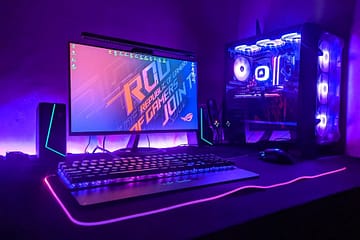Blood pressure is a critical indicator of cardiovascular health, reflecting the force exerted by circulating blood on the walls of blood vessels. It is expressed in two numbers: systolic pressure, which measures the pressure in the arteries when the heart beats, and diastolic pressure, which measures the pressure when the heart is at rest between beats. Normal blood pressure is typically around 120/80 mmHg, but variations can occur based on factors such as age, activity level, and overall health.
Monitoring blood pressure is essential because both high and low readings can signal underlying health issues, including hypertension, heart disease, or other cardiovascular conditions. Understanding blood pressure is vital for maintaining overall health. High blood pressure, or hypertension, often goes unnoticed as it may not present any symptoms.
However, it can lead to serious complications such as stroke, heart attack, and kidney damage if left unmanaged. Conversely, low blood pressure can cause dizziness and fainting. Regular monitoring allows individuals to track their blood pressure trends over time, enabling early detection of potential health problems and facilitating timely intervention.
Key Takeaways
- Understanding blood pressure and its importance is crucial for using a blood pressure monitor effectively.
- Choosing the right blood pressure monitor involves considering factors such as cuff size, ease of use, and accuracy.
- Preparing for a blood pressure reading includes avoiding caffeine, exercising, and emptying your bladder beforehand.
- Taking a blood pressure reading involves sitting in a comfortable position, placing the cuff at heart level, and following the monitor’s instructions.
- Interpreting the results involves understanding the two numbers (systolic and diastolic) and knowing what is considered normal, high, or low blood pressure.
Choosing the Right Blood Pressure Monitor
Manual vs. Automatic Monitors
Manual monitors require a stethoscope and a certain level of expertise to operate, making them more suitable for healthcare professionals. In contrast, automatic monitors are user-friendly and provide digital readings with the push of a button, making them ideal for home use.
Key Factors to Consider
When choosing a monitor, consider factors such as ease of use, accuracy, and whether it fits your arm size properly. Additionally, it is essential to look for monitors that have been validated for accuracy by reputable organizations.
Advanced Features and Making an Informed Choice
Some monitors come with features like memory storage for previous readings, irregular heartbeat detection, and even smartphone connectivity for tracking trends over time. Reading reviews and seeking recommendations from healthcare providers can also help in making an informed choice. Ultimately, the right monitor should meet individual needs while ensuring reliable and consistent results.
Preparing for a Blood Pressure Reading
Preparation is key to obtaining an accurate blood pressure reading. Before taking a measurement, it is advisable to rest for at least five minutes in a quiet environment. This helps to stabilize your heart rate and blood pressure levels.
It is also important to avoid caffeine, nicotine, and vigorous exercise for at least 30 minutes prior to the reading, as these factors can temporarily elevate blood pressure. Additionally, ensure that you are seated comfortably with your back supported and feet flat on the floor. When preparing for the reading, proper positioning of the arm is also crucial.
The arm should be at heart level, supported on a flat surface such as a table. If using a cuff-style monitor, ensure that the cuff is placed snugly around the upper arm without being too tight or too loose. Following these preparatory steps can significantly enhance the accuracy of your blood pressure measurement.
Taking a Blood Pressure Reading
| Metrics | Values |
|---|---|
| Systolic Pressure | 120 mmHg |
| Diastolic Pressure | 80 mmHg |
| Pulse Rate | 70 bpm |
| Arm Circumference | 30 cm |
To take a blood pressure reading using an automatic monitor, first ensure that the device is turned on and properly calibrated according to the manufacturer’s instructions. Place the cuff around your upper arm and press the start button. The monitor will inflate the cuff and then gradually deflate it while measuring your blood pressure.
It is important to remain still and quiet during this process to avoid interference with the reading. Once the measurement is complete, the monitor will display your systolic and diastolic pressures along with your pulse rate. If you are using a manual monitor, you will need to inflate the cuff using a bulb and listen for heartbeats through a stethoscope as you slowly release air from the cuff.
This method requires practice to master but can be very effective when done correctly. Regardless of the method used, it is advisable to take multiple readings at different times to get an accurate representation of your blood pressure.
Interpreting the Results
Interpreting blood pressure readings involves understanding what the numbers mean in relation to established health guidelines. A reading below 120/80 mmHg is considered normal, while readings between 120-129 systolic and less than 80 diastolic indicate elevated blood pressure. Hypertension is classified into stages: Stage 1 hypertension ranges from 130-139 systolic or 80-89 diastolic, while Stage 2 hypertension is defined as 140/90 mmHg or higher.
It is important to note that individual circumstances may affect how these numbers are interpreted. Factors such as age, medical history, and existing health conditions should be taken into account when assessing blood pressure readings. If you consistently record high or low readings, it may be necessary to consult with a healthcare professional for further evaluation and guidance.
Tips for Accurate Blood Pressure Monitoring
Introduction to Accurate Blood Pressure Monitoring
To ensure accurate blood pressure monitoring, consistency in technique is essential. Always measure your blood pressure at the same time each day to account for natural fluctuations throughout the day. Keeping a log of your readings can help identify patterns or changes over time.
Best Practices for Taking Readings
Additionally, avoid talking or moving during the measurement process, as this can lead to inaccurate results. Regularly calibrating your monitor according to manufacturer guidelines can also enhance accuracy.
Troubleshooting Discrepancies in Readings
If you notice significant discrepancies between readings taken at home and those taken at a healthcare facility, consider discussing this with your doctor. They may recommend additional testing or adjustments in monitoring techniques to ensure reliable results.
Importance of Consultation and Follow-Up
Consulting with your doctor is crucial in addressing any concerns or inconsistencies in your blood pressure readings, ultimately leading to better management and care of your health.
Seeking Medical Advice and Support
If you find that your blood pressure readings are consistently outside of the normal range or if you experience symptoms such as headaches, dizziness, or chest pain, it is crucial to seek medical advice promptly. A healthcare professional can provide a comprehensive evaluation and recommend appropriate interventions based on your specific situation. In addition to medical advice, support groups or educational resources can be beneficial for individuals managing high or low blood pressure.
These platforms offer valuable information on lifestyle changes, dietary adjustments, and stress management techniques that can contribute to better blood pressure control. Engaging with healthcare providers and support networks fosters a proactive approach to managing cardiovascular health effectively.



